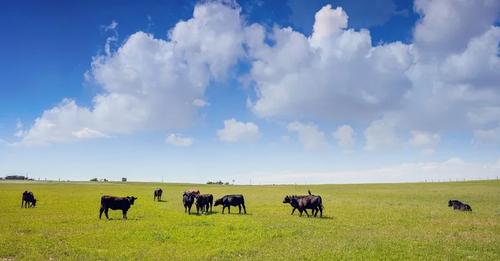- Categories :
- More
Pasture-Finished Beef: A Better Choice?

by Mila McManus, MD
We often get asked if pasture-finished beef is really a better choice than regular beef. Nature recently published the results of one of the most in-depth comparisons of beef from two different finishing systems: pasture-finished on range and grain-finished in a feedlot. Over 1500 compounds were profiled. Pasture-finished beef resulted in fewer environmental impacts, metabolically healthier cattle, and nutrient-dense meat for people, suggesting that it is, indeed, a better choice.
Environmental Gains
Feedlots, or concentrated animal feeding operations (CAFOs), negatively impact the environment by concentrating animal waste and other hazardous substances that pollute the air and water with their runoff. Finishing cattle in this way also consumes huge amounts of grain and the water needed to grow them. Feeding cattle grain, which is not their natural diet, also creates poor digestion and increased flatulence, contributing to air pollution.
Pasture-finished beef helps maintain grasslands and the earth’s soil. The ecosystem is sustained when croplands are rotated with grazing lands, allowing cattle manure to naturally build nutrients for healthy crops.
Metabolically Healthier Cattle
When cattle are allowed to pursue their food of choice, grass, they are metabolically healthier (less flatulence!), have improved mitochondrial function, and lower oxidative stress. Allowing the cow to eat and live in its natural environment reduces animal stress and provides the best for the animal’s welfare.
Significant Differences in Nutritional Analysis of Meat
Pasture-finished (100% grass-fed and finished) proved notably higher in many nutrients. It was almost three times higher in certain antioxidants, including vitamin E, and nine times higher in vitamin B3 than in grain-fed beef. The anti-inflammatory Omega 3 content was four times higher in grass-finished beef, resulting in a healthy Omega 6 to 3 ratio. Consuming pasture-finished red meat is associated with improved cardiometabolic health. Equally important, the pasture-finished meat did not have antibiotics observed in it like the grain-fed feedlot cattle. Finally, long-chain saturated fatty acids were also enriched in pasture-finished beef. Higher circulating levels of these fats are associated with a decreased risk of diabetes and cardiovascular disease in humans.
If you have access to pasture-raised beef, it’s worth choosing for the extra nutrients that support optimal health, and for avoiding toxins and other inflammatory chemicals. Check out Butcher Box and Wild Pastures for pastured, biodynamically raised cattle, and other organic clean meats.
Healthy Cows. Healthy People.
Resources:
Gill, Chris. Is Feedlot Beef Bad for the Environment? (pitchstonewaters.com, 2/1/2016)
Evans, N. et al. Pasture-finishing of cattle in Western U.S. rangelands improves markers of animal metabolic health and nutritional compounds in beef. Scientific Reports: Nature Portfolio. 2024, https://doi.org/10.1038/s41598-024-71073-3.
















